Mastering Design Elements and Principles: Secrets to Visually Impactful Designs
Great design is unforgettable. It draws you in, engages you, and leaves a lasting impression. But what makes a design genuinely effective? The secret lies in mastering the fundamental elements and principles of design.
In this post, we'll peel back the layers on the core building blocks of impactful visual design. You'll learn to wield essential design elements like colour, shape, line, texture, and space. We'll explore classic design principles like balance, emphasis, rhythm, and unity. And we'll see how the masters combine these ingredients to create designs that delight, inspire, and endure.
Whether you're a seasoned pro or just starting out in design, this post will help deepen your understanding of the visual toolkit. You'll gain practical tips for using the elements and principles to make your work stand out. We'll look at examples from world-class designers and less obvious sources of inspiration.
By the end, you'll have a refined perspective on design aesthetics and new skills for crafting beautiful, effective visual communication. The knowledge you gain will help your designs grab attention, convey meaning, and connect on a deeper level with people.
So, let's get started exploring the secrets to visually impactful design!
- Mastering design elements like colour, line, shape, texture, and space enhances the overall visual experience of a design.
- Design principles such as balance, contrast, hierarchy, and unity provide a roadmap for creating impactful, harmonious compositions.
- Understanding colour psychology allows designers to evoke emotions and convey a specific message through strategic colour choices.
- Utilising space effectively creates balance, guides viewer attention, and improves readability in all design contexts.
- Combining elements and principles thoughtfully fosters visually stunning designs that resonate deeply with viewers.
Importance of Design Elements
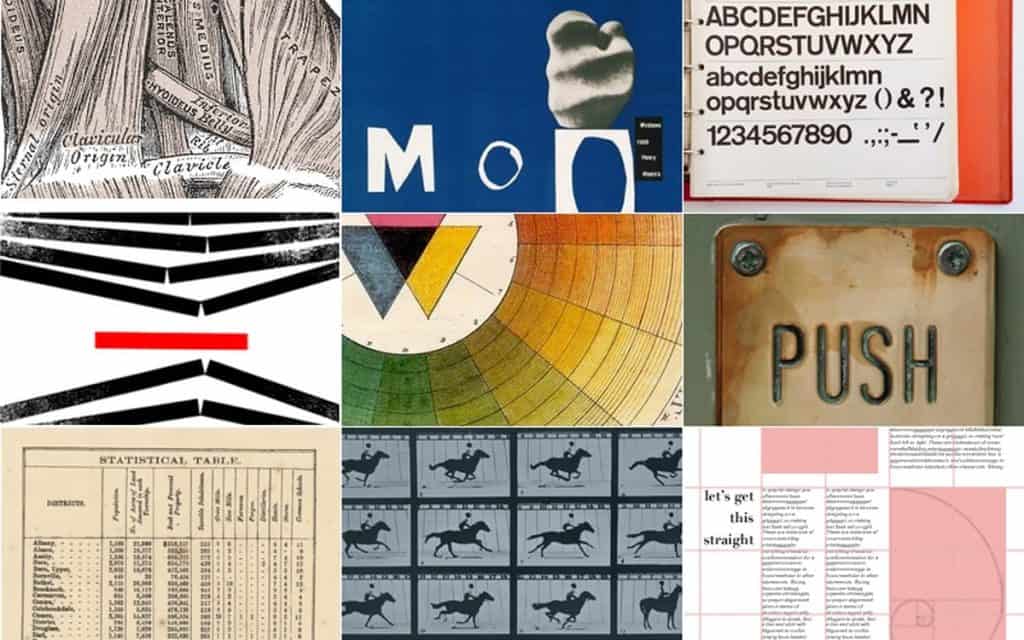
Design elements are essential for creating visually appealing and impactful designs. Each factor contributes to the overall composition and visual experience of a design.
Understanding the importance of design elements can help designers make deliberate choices and create more effective strategies.
Line: Line is one of the fundamental design elements that can influence a design's mood and visual flow. It can create a sense of movement, lead the eye to critical areas, and add visual interest. For example, horizontal lines in a website design can convey stability and calmness, while diagonal lines can create a dynamic and energetic feel.
Beyond straight or diagonal: vertical lines? They often suggest strength, stability, or even imposing height, giving a solid, grounded feel. Curves, meanwhile, bring in a softer, more natural flow, a real sense of organic movement.
Jagged lines can create sharp excitement, or if misused, a bit of unwelcome visual tension. Line weight, its actual thickness, also matters greatly; a heavy line grabs attention, feels bold, while a thin one is more subtle and precise.
By understanding the different effects that lines can have, designers can strategically use them to enhance the message and impact of their designs.

Colour: Colour is a powerful tool in design that can evoke emotions, create specific moods, and convey meaning. Different colours have different psychological effects on viewers, and by strategically selecting and using colours, designers can influence the perception and response to a design.
For example, a website for a children's brand might use bright and vibrant colours to create a playful and energetic atmosphere. On the other hand, a website for a luxury brand might use muted and sophisticated colours to convey a sense of elegance and exclusivity.
It’s not just picking colours you fancy; they genuinely need to work together through proper colour harmony. This careful selection creates something truly pleasing and visually coherent.
Monochromatic schemes use one base colour in its various shades and tints; often simple, yet can look incredibly smart. Analogous colours, being close neighbours on the colour wheel, frequently make designs feel calm and comfortable.
For real visual punch, try complementary colours, direct opposites on the wheel; these create strong, attention-grabbing contrast and loads of focused energy. These established setups help ensure your chosen colours strongly support the design's intended message.
By understanding colour psychology and the impact of different colour combinations, designers can create designs that effectively communicate the intended message.
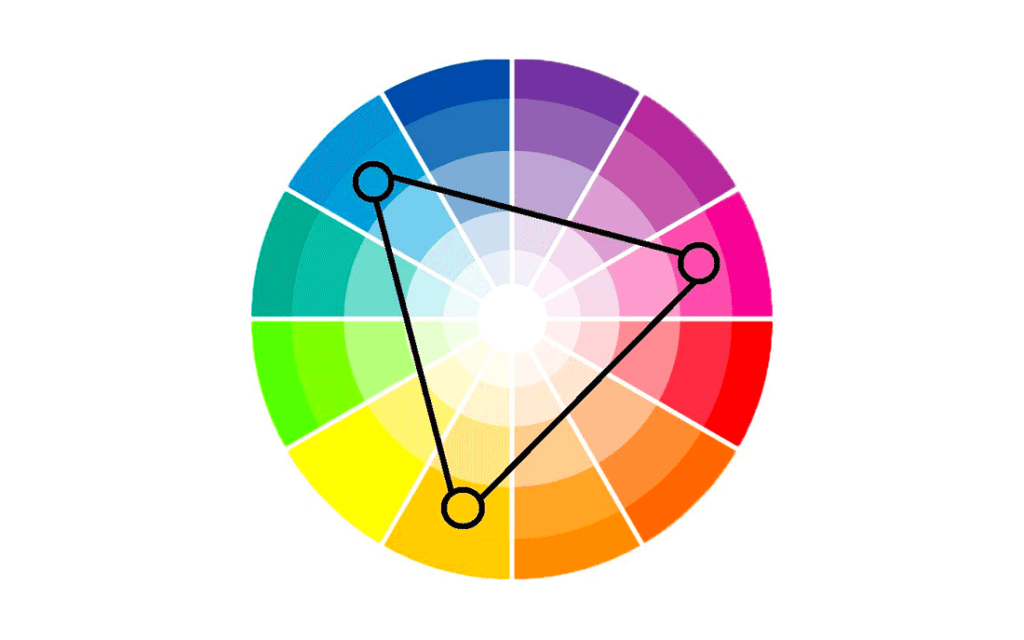
Shape: Shape adds visual interest, defines objects, and creates a sense of balance in a design. Different forms convey different feelings and can communicate specific messages or themes.
Geometric shapes, such as squares and triangles, can create a sense of order and structure, while organic shapes, like circles and curves, can convey a more natural and fluid feel. By understanding the visual impact of different forms, designers can choose the most appropriate shapes to enhance their overall composition and message.

Texture: Texture can add depth and visual interest to specific parts of a design. It refers to the physical and visual qualities of a surface. Texture can be created through various techniques, such as photographs, illustrations, or digital effects. However, it is essential to use texture in moderation to avoid overwhelming the design.
By carefully selecting and applying textures, designers can create a more tactile and immersive experience for the viewer. For example, in a branding project for a coffee shop, adding a subtle coffee bean texture to the packaging design can enhance the sensory experience and create a stronger connection with the product.
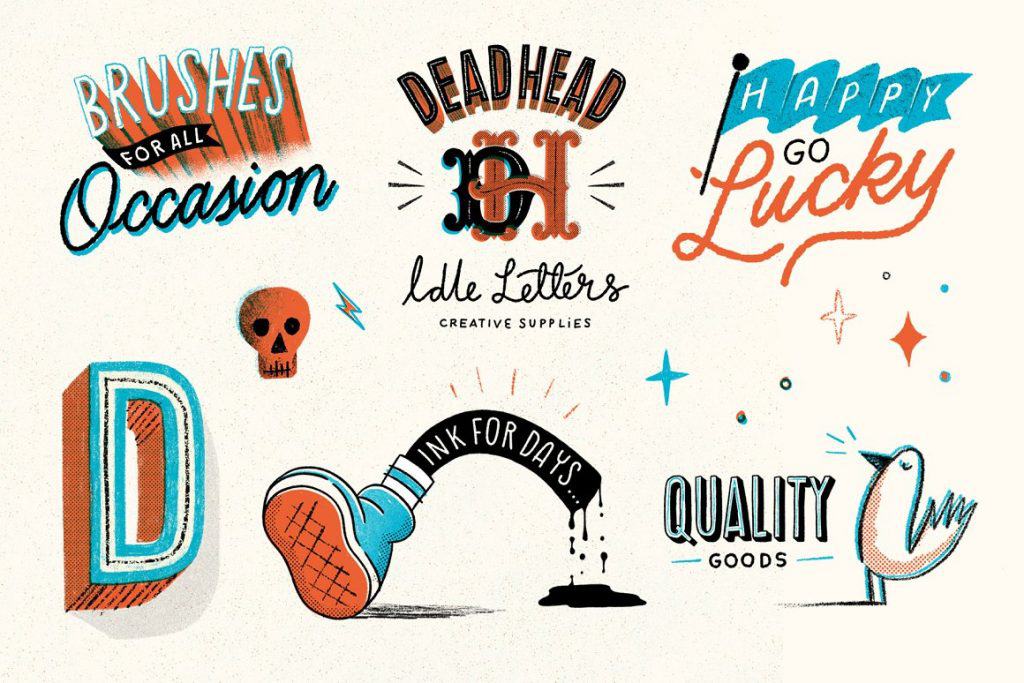
Space: Space is an important design element that affects a design's overall composition and balance. By manipulating negative space, designers can create a sense of harmony, highlight essential features, and improve readability.
Negative space can also guide the viewer's attention and create a visual hierarchy. For example, leaving ample white space around the main headline in a poster design can make it stand out and draw attention.
By understanding the role of space in design, designers can create more balanced and visually pleasing compositions.

Value
Let's properly look at Value. Not monetary cost, but the inherent lightness or darkness of any colour, from pure white right down to solid black. This is quite separate from the colour itself (its hue) or its overall intensity (saturation).
Value is absolutely key for creating effective contrast, helping to visually separate objects and making all your text significantly more readable. It also builds a clear hierarchy and gives a convincing sense of depth, making flat shapes appear 3D by mimicking light and shadow.
Designers use value to expertly guide the eye and to set a specific, desired mood. High contrast designs, with big value differences, feel energetic and striking. Low contrast designs, with more subtle shifts, are calmer, more understated.
By understanding the importance of design elements and how they can be utilised, designers can create visually appealing and impactful designs that effectively communicate their intended message.
Whether it's the use of lines to make sense of movement, colour to evoke emotions, shape to define objects, texture to add depth, or space to create balance, each design element plays a crucial role in the overall visual experience of a design.
Design Principles
Design principles are guidelines that help designers create compelling and harmonious designs. They provide a framework to organise and arrange design elements in a visually pleasing and impactful way. By understanding and applying these principles, designers can create aesthetically pleasing, functional, and communicative designs.
Balance: Balance is achieved through the distribution of elements in a design. It creates a sense of harmony and equilibrium. There are three types of balance: symmetrical, asymmetrical, and radial. Symmetrical balance is achieved when elements are evenly distributed on both sides of a central axis.
It creates a sense of stability and formality. Asymmetrical balance is achieved when elements of different sizes, shapes, or colours are balanced through their visual weight. It creates a more dynamic and informal feel.
Radial balance is achieved when elements radiate from a central point. It makes sense of movement and energy. By understanding the different types of balance, designers can create compositions that suit their designs' desired mood and message.

Contrast: Contrast is the degree of difference between elements in a design. It makes a design visually striking and helps emphasise critical elements. Contrast can be created through colour, size, shape, or texture.
For example, using a bold colour against a neutral background creates a high contrast that draws attention to the focal point of the design. Contrast can also be used to create a visual hierarchy and improve readability. By understanding the principles of contrast, designers can create visually engaging and impactful designs.

Hierarchy: Hierarchy helps prioritise elements in a design. It guides the viewer's attention and helps to organise information effectively. Hierarchy can be established through size, colour, and placement. For example, using a larger font or bolder colour for important information creates order and helps prioritise the information in a design.
Hierarchy is significant in details like websites, infographics, or presentations. By understanding the principles of hierarchy, designers can create designs that effectively communicate the intended message and guide the viewer through the content.

Emphasis: Emphasis highlights important areas or elements in a design. It draws attention and creates a focal point. Emphasis can be achieved through colour, size, or placement. For example, using a bright colour or increasing the size of a specific element can create focus and make it stand out.
Emphasis is significant in designs with a particular goal or call-to-action, such as advertisements or user interfaces. By understanding the principles of emphasis, designers can create designs that effectively communicate the desired message and guide the viewer's attention.
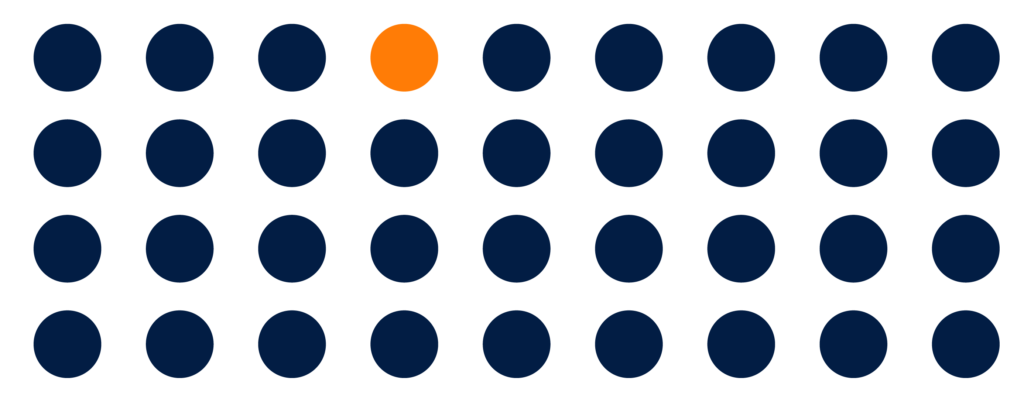
Unity: Unity ensures that all design elements are connected and cohesive. It creates a visually pleasing composition. Unity can be achieved by repeating features, such as colour, shape, or texture. Consistency in design elements helps make a sense of harmony and unity.
A smart way to achieve design unity is through Gestalt principles, like that of proximity. The core idea is simple: elements placed physically close together are perceived by the brain as belonging to the same group, not just as separate, random bits.
By arranging elements carefully and thoughtfully, you create clear, obvious visual connections. This makes the entire design feel more cohesive and is generally much easier for people to quickly grasp and understand.
For example, using a consistent colour palette throughout a website design creates a sense of cohesiveness and professionalism. Unity is fundamental in designs with multiple elements or sections, such as websites or brochures. By understanding the principles of unity, designers can create visually cohesive and engaging designs.

Rhythm: Rhythm creates a sense of flow and pattern in a design. It adds movement and visual interest. Rhythm can be incorporated by repeating elements, practices, or the flow of elements. For example, using a repeated pattern or a series of aspects with consistent spacing creates a sense of rhythm and adds visual interest to a design.
Rhythm is fundamental in designs that have a sequential or linear nature, such as websites or presentations. By understanding the principles of rhythm, designers can create designs that have a dynamic and engaging visual flow.
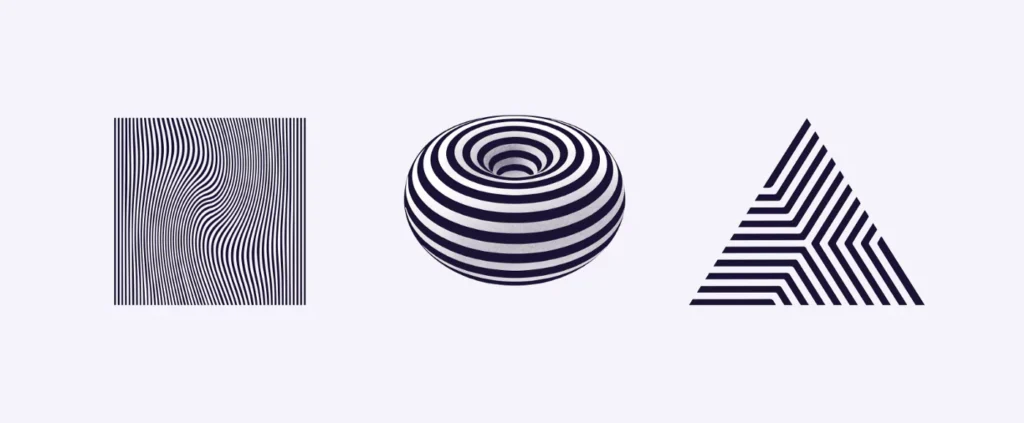
Proportion: Proportion refers to the relative size of elements against each other. It creates a sense of balance and harmony between elements.
Proportion is essential in achieving a visually pleasing composition. A common and useful guideline for achieving good visual proportion is the well-known Rule of Thirds. You imagine dividing your design space into nine equal rectangular parts using two horizontal and two vertical lines, like a simple grid.
Placing your key design elements along these imaginary lines, or even more powerfully, at their points of intersection, often creates a more balanced and dynamically engaging layout. This approach is generally more visually appealing than simply centring every element, as it helps distribute visual interest effectively across the composition. For example, using a significant element as a focal point and more minor elements around it creates a sense of proportion and balance.
Proportion is vital in designs with multiple elements or objects, such as illustrations or product layouts. By understanding the principles of harmony, designers can create visually balanced and harmonious compositions.

Design principles are essential for creating impactful and aesthetically pleasing designs. By understanding and applying these principles, designers can create visually appealing compositions that communicate their intended message.
Whether it's achieving balance, creating contrast, establishing hierarchy, emphasising key elements, maintaining unity, incorporating rhythm, or ensuring proportion, each design principle contributes to the overall visual impact of a design.
Mastering Design Elements and Principles
Design elements and principles are essential for creating visually appealing and impactful designs. By understanding and applying these concepts, designers can create harmonious compositions that communicate their intended message.
The interplay between design elements, such as line, shape, colour, texture, and space, and applying design principles, including balance, contrast, hierarchy, emphasis, unity, rhythm, and proportion, allows for creating aesthetically pleasing and practical designs. By incorporating these principles into their design process, designers can elevate their work and create compelling visual experiences.

